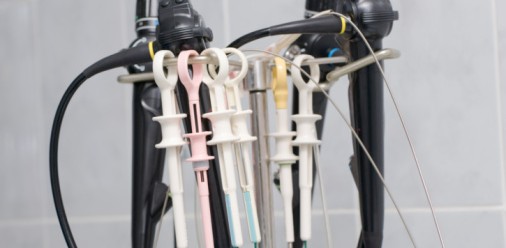Hospital-acquired Infections
Hospital-acquired infections have once again found a place in the news. Thirty-two individuals are reported to have been infected by a number of different drug-resistant strains of bacteria through contaminated endoscopes. Eleven of these patients have died, but due to their prior severe illnesses it is unclear whether or not the new infections played any role. The endoscopes in question are called duodenoscopes and are used to treat liver and pancreas illnesses. They are professionally sterilized to high standards between patients, which has unfortunately turned out to no longer be adequate.
The disinfection procedures that the manufacturers recommended were approved by the U.S. Food and Drug Administration (FDA), but after the hospital was able to identify the sterilized scopes as the source of infection they had to switch to a method that exceeded the national standards. The FDA is working with the endoscope suppliers and medical centers to develop new solutions, but this is not the first time scopes have been identified as a source of nosocomial infections. Pittsburgh in 2012 and Chicago in 2014 both saw hospital-acquired infections due to contaminated endoscopes, but luckily there were no fatalities.
The most well-known hospital-acquired infection is Methicillin-resistant Staphylococcus aureus, or MRSA. MRSA originated in the hospital setting, but has expanded to locker rooms, livestock, prisons, military barracks, and homeless shelters. Since many of the individuals infected have weakened immune systems they are already at a greater risk of nosocomial infections. In addition, MRSA’s resistance to certain antibiotics (like penicillins and cephalosporins) make it very difficult to treat.
One of the drug resistant strains of bacteria responsible for the infections in Seattle include Carbapenem-resistant enterobacteriaceae (CRE). Two examples of CRE include Klebsiella species and Escherichia coli (E. coli). While these are normal human gut bacteria, they can cause infection in those undergoing invasive treatments due to illness (like the endoscopes) or those that are taking long courses of antibiotics. Many strains of CRE have become resistant to most of the available antibiotics, making them especially deadly.
How can you protect yourself from hospital-acquired infections, like MRSA and CRE? Most of the prevention is done by the hospital – sterilizing equipment, using appropriate isolation procedures, washing hands, wearing gloves, sanitizing surfaces, wearing aprons while treating patients, and even using antimicrobial surfaces like copper bedrails. For patients that want to protect themselves there is a list of questions you can ask your healthcare provider that is provided by the Centers for Disease Control and Prevention: http://www.patientcarelink.org/uploadDocs/1/Massachusetts-Consumer-HAI-Basics.pdf

